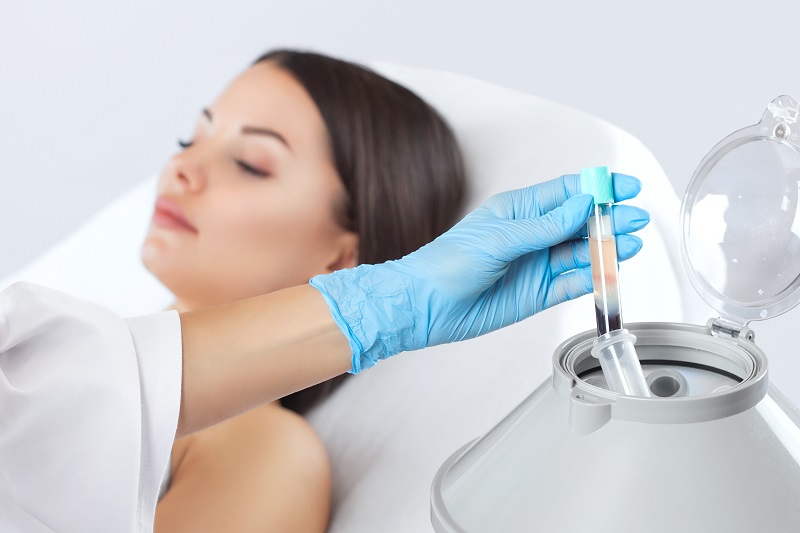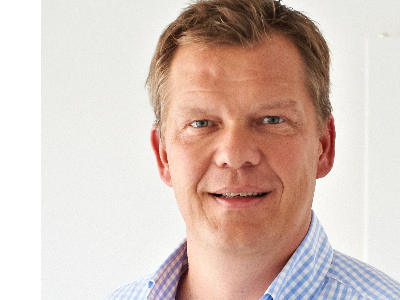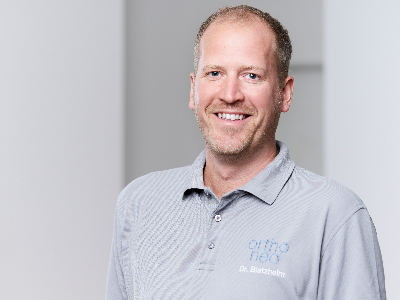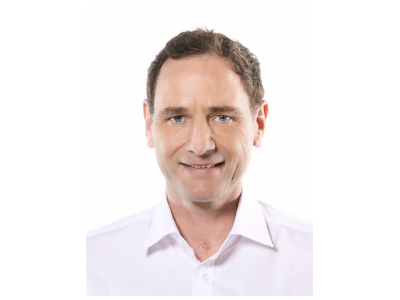PRP-Therapie
Bei der sogenannten PRP-Behandlung (Platlett Rich Plasma/Thrombozytenreiches Plasma) handelt es sich um eine neue Therapieform zur Behandlung von Erkrankungen der Gelenke, Bänder, Sehnen oder der Muskulatur. Dabei können sowohl durch Verschleiß bedingte Zustände wie Arthrose als auch Verletzungsfolgen behandelt werden.

Einsatzgebiete
- Arthrose
- Muskelschäden
- Sehnen- und Bandverletzungen
- Achillessehnenriss
- Verletzungen vorderes Kreuzband
- Verletzungen hinteres Kreuzband
- Außenbandverletzung des oberen Sprunggelenks
Wirkprinzip
Die Verwendung von Eigenblut und Eigenblutprodukten hat in der rekonstruktiven Chirurgie des Zahn-, Mund- und Kieferbereichs eine lange, wissenschaftlich fundierte Tradition. Bereits in den Sechzigerjahren war der Einsatz von Eigenblut und zentrifugiertem Eigenblut klinisch etabliert und wissenschaftlich dokumentiert[1]. Darüber hinaus wurden in jüngerer Vergangenheit Verfahren zur Anreicherung von Thrombozyten durch Modifikation von Zentrifugationsprotokollen entwickelt. Die Anwendung von thrombozytenreichem Plasma beruht auf der Erkenntnis, dass Thrombozyten bei der Blutgerinnung Wachstumsfaktoren freisetzen, die einen positiven Einfluss auf den Heilungsverlauf haben. Durch eine lokale Konzentrationserhöhung der in den angereicherten Thrombozyten enthaltenen Wachstumsfaktoren können Wundheilungs- und Regenerationsprozesse in Defekten beschleunigt werden.
Für die Herstellung von plättchenreichen Eigenblutprodukten wurden in den vergangenen Jahren mehrere kommerziell erhältliche Kits überprüft[2]. Zudem wurden die Zentrifugationsprotokolle modifiziert und wissenschaftlich evaluiert[3]:
Durchführung
Für die Herstellung eines PRP-Präparats wird dem Patienten eine kleine Menge Blut aus der Armvene entnommen. Dieses Vollblut wird anschließend in einer Zentrifuge in seine Bestandteile aufgetrennt. Das dabei gewonnene Plättchenkonzentrat (PRP-Präparat) wird dann zum Beispiel durch die Zugabe von Thrombin oder Kalziumchlorid aktiviert, um die Freisetzung der Botenstoffe und Wachstumsfaktoren zu unterstützen. Anschließend wird das Präparat in das Gelenk oder den verletzten Bereich gespritzt. Je nach Herstellungs- und Zentrifugationsverfahren und abhängig von Einflussgrößen, die mit dem einzelnen Patienten zu tun haben, enthalten die gewonnenen PRP-Präparate unterschiedliche Mengen an Thrombozyten und Wachstumsfaktoren. Die Konzentration der Plättchen im PRP-Präparat kann ein Vielfaches der Konzentration im Vollblut betragen. Meist ist die Plättchenkonzentration um das Drei- bis Sechsfache erhöht.
Arthrosebehandlung
In den vergangenen Jahren wurde eine Reihe klinischer Studien mit verschiedenen PRP-Präparaten durchgeführt. Bei der symptomatischen Behandlung der Kniearthrose zeigten sich hier gute Ergebnisse – insbesondere im frühen Stadium der Arthrose. Außerdem zeigte die PRP-Behandlung im Vergleich zur Hyaluronsäure-Therapie eine bessere Wirkung.
Zusammenfassend deutet die derzeitige Studienlage darauf hin, dass PRP besonders bei noch nicht allzu weit fortgeschrittener Arthrose einen therapeutischen Stellenwert hat.
Sehnen- und Sehnenansatzverletzungen/ -entzündungen
In den letzten Jahren wurden eine größere Zahl von Studien zur Behandlung mit PRP bei Sehnenverletzungen, Sehnenansatzverletzungen und Sehnenentzündungen veröffentlicht
(insbesondere zu Achillessehnenverletzungen, Epikondylitis / Tennis- und Golferellenbogen, Patellarsehnenverletzungen / -entzündungen).
Zur Behandlung von Sehnenverletzungen gibt es eine ähnliche Studienlage wie zur Behandlung der Arthrose. Studien haben gezeigt, dass eine PRP-Therapie insbesondere bei chronischen Sehnenverletzungen zu einer besseren und schnelleren Regeneration der Verletzung und zum Abklingen der Entzündung führen kann.
[1] Schulte: „Zentrifugiertes Eigenblut zur Füllung großer Knochendefekte – eine Modifikation der Eigenblutmethode“, Dtsch Zahnärztl. Z 1969;24:854-857; ders.: „Die Knochenregeneration nach Ausschälung großer Kieferzysten und ihre Konsequenzen für die Operationstechnik“, Dtsch Zahn Mund Kieferheilk 1965;45:177-206; ders.: „Die Eigenblutfüllung: eine neue Methode zur Versorgung größerer Knochendefekte nach intraoralen Eingriffen“, Dtsch Zahnärztl Z 1960;15:910-914.
[2] Fréchette et al.: “Platelet-rich Plasmas: growth factor content and roles in wound healing”, J Dent Res 2005;84:434-439; Mazzucco et al.: “Not every PRP-gel is born equal. Evaluation of growth factor availability for tissues through four PRP-gel preparations: Fibrinet, RegenPRP-Kit, Plateltex and one manual procedure”, Vox Sang 2009; 97:110-118; Weibrich et al.: “Comparison of platelet, leukocyte, and growth factor levels in point-of-care platelet-enriched plasma, prepared using a modified Curasan kit, with preparations received from a local blood bank”, ClinOral Implants Res 2003; 14:357-362.
[3] Anitua et al.: “The potential impact of preparation rich in growth factors (PRGF) in different medical fields”, Biomaterials 2007;28:4551-4560; Dohan Ehrenfest et al.: “Classification of platelet concentrates: from pure platelet-rich plasma (P-PRP) to leucocyte- and platelet-rich fibrin (L-PRF)”, Trends Biotechnol 2009;27:158-167; Dohan et al.: “Platelet-rich fibrin (PRF): a second-generation plarelet concentrate. Part I: technological concepts and evolution”, Oral Surg Oral Med Oral Pathol Oral Radiol Endod 2006;101:e37-44.
Literatur und weiterführende Links
- Altman, R. D. / Devji, T. / Bhandari, M. / u.a.: Clinical benefit of intra-articular saline as a comparator in clinical trials of knee osteoarthritis treatments: A systematic review and meta-analysis of randomized trials. Semin Arthritis Rheum. 2016 Apr 27. pii: S0049-0172(16)30009-9.
- Andia, I. / Maffulli, N.: Platelet-rich plasma for managing pain and inflammation in osteoarthritis. Nat Rev Rheumatol. 2013 Dec;9(12):721-30.
- Bhandari, M. / Smith, J. / Miller, L. E. / Block, J. E.: Clinical and economic burden of revision knee arthroplasty. Clin Med Insights Arthritis Musculoskelet Disord. 2012;5:89-94.
- Borzini, P. / Mazzucco, L.: Tissue Regeneration and in Loco Administration of Platelet Derivates: Clinical Outcomes, Heterogeneous Products, and Heterogeneity of Effector Mechanisms; Transfusion, 2005; 45: 1759 -1767.
- Edwards, D. / u.a.: Transforming Growth Factor Beta Modulates the Expression of Collagenase and Metalloproteinase Inhibitor, The EMBO Journal, 1987, 6, 7,1899-1904.
- Graziani, F. / u.a.: The In Vitro Effect of Different PRP Concentrations on Osteoblasts and Fibroblasts, Clin Oral Implants Res., 2006; 17(2): 212-9. Transfusion, 2005, 45, 1759 -1767.
Weitere Literatur auf Anfrage beim Autor
Literatur zum Thema Arthrose und PRP
- Altman RD, Devji T, Bhandari M, Fierlinger A, Niazi F, Christensen R. Clinical benefit of intra-articular saline as a comparator in clinical trials of knee osteoarthritis treatments: A systematic review and meta-analysis of randomized trials. Semin Arthritis Rheum. 2016 Apr 27. pii: S0049-0172(16)30009-9. doi: 10.1016/j.semarthrit.2016.04.003.
- Andia I, Maffulli N. Platelet-rich plasma for managing pain and inflammation in osteoarthritis. Nat Rev Rheumatol. 2013 Dec;9(12):721-30.
- Bhandari M, Smith J, Miller LE, Block JE. Clinical and economic burden of revision knee arthroplasty. Clin Med Insights Arthritis Musculoskelet Disord. 2012;5:89-94.
- Bar-Or D, Salottolo KM, Loose H, Phillips MJ, McGrath B, Wei N, Borders JL, Ervin JE, Kivitz A, Hermann M, Shlotzhauer T, Churchill M, Slappey D, Clift V. A randomized clinical trial to evaluate two doses of an intra-articular injection of LMWF-5A in adults with pain due to osteoarthritis of the knee. PLoS One. 2014 Feb 3;9(2):e87910.
- Campbell KA, Saltzman BM, Mascarenhas R, Khair MM, Verma NN, Bach BR Jr, Cole BJ. Does Intra-articular Platelet-Rich Plasma Injection Provide Clinically Superior Outcomes Compared With Other Therapies in the Treatment of Knee Osteoarthritis? A Systematic Review of Overlapping Meta-analyses. Arthroscopy. 2015 Nov;31(11):2213-21.
- Chang KV, Hung CY, Aliwarga F, Wang TG, Han DS, Chen WS. Comparative effectiveness of platelet-rich plasma injections for treating knee joint cartilage degenerative pathology: a systematic review and meta-analysis. Arch Phys Med Rehabil. 2014 Mar;95(3):562-75.
- DeLong JM, Russell RP, Mazzocca AD. Platelet-rich plasma: the PAW classification system. Arthroscopy. 2012 Jul;28(7):998-1009.
- Felka T, Rothdiener M, Bast S, Uynuk-Ool T, Zouhair S, Ochs BG, De Zwart P, Stoeckle U, Aicher WK, Hart ML, Shiozawa T, Grodzinsky AJ, Schenke-Layland K, Venkatesan JK, Cucchiarini M, Madry H, Kurz B, Rolauffs B. Loss of spatial organization and destruction of the pericellular matrix in early osteoarthritis in vivo and in a novel in vitro methodology. Osteoarthritis Cartilage. 2016 Feb 12. pii: S1063-4584(16)01020-7. doi: 10.1016/j.joca.2016.02.001. [Epub ahead of print]
- Fibel KH, Hillstrom HJ, Halpern BC. State-of-the-Art management of knee osteoarthritis. World J Clin Cases. 2015 Feb 16;3(2):89-101.
- Flechtenmacher J, Huch K, Thonar EJ, Mollenhauer JA, Davies SR, Schmid TM, Puhl W, Sampath TK, Aydelotte MB, Kuettner KE. Recombinant human osteogenic protein 1 is a potent stimulator of the synthesis of cartilage proteoglycans and collagens by human articular chondrocytes. Arthritis Rheum. 1996 Nov;39(11):1896-904.
- Gaissmaier C, Fritz J, Krackhardt T, Flesch I, Aicher WK, Ashammakhi N. Effect of human platelet supernatant on proliferation and matrix synthesis of human articular chondrocytes in monolayer and three-dimensional alginate cultures. Biomaterials. 2005 May;26(14):1953-60.
- Gaissmaier C, Fritz J, Schewe B, Weise K, Mollenhauer J, Aicher WK. Cartilage Defects: Epidemiology and Natural History. Osteo Trauma Care. 2006; 14:188-94.
- Gómez LA, Escobar M, Peñuela O. Standardization of a Protocol for Obtaining Platelet Rich Plasma from blood Donors; a Tool for Tissue Regeneration Procedures. Clin Lab. 2015;61(8):973-80.
- Kalén A, Wahlström O, Linder CH, Magnusson P. The content of bone morphogenetic proteins in platelets varies greatly between different platelet donors. Biochem Biophys Res Commun. 2008 Oct 17;375(2):261-4.
- Kuettner KE, Goldberg VM: Introduction. In: Kuettner KE, Goldberg VM (eds): Osteoarthritic disorders. American Academy of Orthopaedic Surgeons (1995)
- Malemud CJ. Biologic basis of osteoarthritis: state of the evidence. Curr Opin Rheumatol. 2015 May;27(3):289-94.
- Mapp PI, Walsh DA. Mechanisms and targets of angiogenesis and nerve growth in osteoarthritis. Nat Rev Rheumatol. 2012 May 29;8(7):390-8.
- Mariani E, Canella V, Cattini L, Kon E, Marcacci M, Di Matteo B, Pulsatelli L, Filardo G. Leukocyte-Rich Platelet-Rich Plasma Injections Do Not Up-Modulate Intra-Articular Pro-Inflammatory Cytokines in the Osteoarthritic Knee. PLoS One. 2016 Jun 3;11(6):e0156137.
- Mariani E, Pulsatelli L, Facchini A. Signaling pathways in cartilage repair. Int J Mol Sci. 2014 May 15;15(5):8667-98.
- Marmotti A, Rossi R, Castoldi F, Roveda E, Michielon G, Peretti GM. PRP and articular cartilage: a clinical update. Biomed Res Int. 2015;2015:542502.
- Mazzocca AD, McCarthy MB, Chowaniec DM, Cote MP, Romeo AA, Bradley JP, Arciero RA, Beitzel K. Platelet-rich plasma differs according to preparation method and human variability. J Bone Joint Surg Am. 2012 Feb 15;94(4):308-16.
- Meheux CJ, McCulloch PC, Lintner DM, Varner KE, Harris JD. Efficacy of Intra-articular Platelet-Rich Plasma Injections in Knee Osteoarthritis: A Systematic Review.Arthroscopy. 2016 Mar;32(3):495-505.
- Mollenhauer J, Aurich M. Grundlegendes zum Gelenkknorpel. In: Fritz J, Aicher WK, Eichhorn HJ (Hrsg). Praxisleitfaden der Knorpelreparatur. Kapitel 1. Springer Verlag, Berlin, Heidelberg 2003; 3-10.
- Oh JH, Kim W, Park KU, Roh YH. Comparison of the Cellular Composition and Cytokine-Release Kinetics of Various Platelet-Rich Plasma Preparations. Am J Sports Med. 2015 Dec;43(12):3062-70.
- Ornetti P, Nourissat G, Berenbaum F, Sellam J, Richette P, Chevalier X; under the aegis of the Osteoarthritis Section of the French Society for Rheumatology (Société Française de Rhumatologie, SFR). Does platelet-rich plasma have a role in the treatment of osteoarthritis? Joint Bone Spine. 2016 Jan;83(1):31-6.
- Roos EM, Arden NK. Strategies for the prevention of knee osteoarthritis. Nat Rev Rheumatol. 2016 Feb;12(2):92-101.
- Sadabad HN, Behzadifar M, Arasteh F, Behzadifar M, Dehghan HR. Efficacy of Platelet-Rich Plasma versus Hyaluronic Acid for treatment of Knee Osteoarthritis: A systematic review and meta-analysis. Electron Physician. 2016 Mar 25;8(3):2115-22.
- Schiraldi C, Stellavato A, de Novellis F, La Gatta A, De Rosa M. Hyaluronan viscosupplementation: state of the art and insight into the novel cooperative hybrid complexes based on high and low molecular weight HA of potential interest in osteoarthritis treatment. Clin Cases Miner Bone Metab. 2016 Jan-Apr;13(1):36-7.
- Gaissmaier C, Flechtenmacher J: Aktuelle Evidenzlage bei der Behandlung der Arthrose mit autologem plättchenreichem Plasma. OUP 2016; 9: 468–472 DOI 10.3238/oup.2016.0468–0472
- Wen-Li Dai, M.Sc., Ai-Guo Zhou, M.D., Hua Zhang, M.D., and Jian Zhang, M.D. The Journal of Arthroscopic and Related Surgery, Vol 33, No 3 (March), 2017: pp 659-670 Efficacy of Platelet-Rich Plasma in the Treatment of Knee Osteoarthritis: A Meta-analysis of Randomized Controlled Trials
Literatur zu PRP und Sehnenverletzungen
- Borzini P, and Mazzucco L., Tissue Regeneration and in Loco Administration of Platelet Derivates: Clinical Outcomes, Heterogeneous Products, and Heterogeneity of Effector Mechanisms; Transfusion, 2005; 45: 1759 -1767.
- Edwards D, et al, Transforming Growth Factor Beta Modulates the Expression of Collagenase and Metalloproteinase Inhibitor, The EMBO Journal, 1987, 6, 7,1899-1904.
- Graziani F, et al, The In Vitro Effect of Different PRP Concentrations on Osteoblasts and Fibroblasts, Clin Oral Implants Res., 2006; 17(2): 212-9. Transfusion, 2005, 45, 1759 -1767.
- Scott A, et al, What do we mean by the term “inflammation“? A contemporary basic science update for sports medicine, Br J Sports Med., 2004; 38(3): 372-80.
- Sanchez M, Anitua E, Azofra J, Prado R, Muruzabal F, Andia I. Ligamentization of tendon grafts treated with an endogenous preparation rich in growth factors: gross morphology and histology. Arthroscopy. 2010;26:470–480.
- Jiang N, et al, Respiratory protein–generated reactive oxygen species as an antimicrobial strategy, Nat Immunol., 2007; 8(10): 1114-22.
- Weibrich et al, Growth Factor Levels in PRP and Correlations with Donor age, sex, and Platelet Count, Journal of Cran-Max. Surgery,2002, 30, 97-102.
- Mishra A, Harmon K, Woodall J, Vieira A. Sports Medicine Applications of Platelet Rich Plasma. Curr Pharm Biotechnol. 2012;13:1185–95.
- Dragoo JL, Braun HJ, Durham JL, Ridley BA, Odegaard JI, Luong R, et al. Comparison of the acute inflammatory response of two commercial platelet-rich plasma systems in healthy rabbit tendons. Am J Sports Med. 2012;40:1274–81.
- McCarrel TM, Minas T, Fortier LA. Optimization of leukocyte concentration in platelet-rich plasma for the treatment of tendinopathy. (1-8).J Bone Joint Surg Am. 2012;94:e143.
- Taylor DW, Petrera M, Hendry M, The odoropoulos JS. A systematic review of the use of platelet-rich plasma in sports medicine as a new treatment for tendon and ligament injuries. Clin J Sport Med. 2011;21:344–52.
- Mishra A, Pavelko T. Treatment of chronic elbow tendinosis with buffered platelet rich plasma. Am J Sports Med. 2006;34:1774–8.
- Peerbooms JC, Sluimer J, Bruijn DJ, Gosens T. Positive effect of an autologous platelet concentrate in lateral epicondylitis in a double-blind randomized controlled trial: Platelet-rich plasma versus corticosteroid injection with a 1-year followup. Am J Sports Med. 2010;38:255–62.
- Gosens T, Peerbooms JC, van Laar W, den Oudsten BL. Ongoing positive effect of platelet-rich plasma versus corticosteroid injection in lateral epicondylitis: A double-blind randomized controlled trial with 2-year followup. Am J Sports Med. 2011;39:1200–8.
- Kon E, Buda R, Filardo G, Di Martino A, Timoncini A, Cenacchi A, Fornasari PM, Giannini S, Marcacci M. Platelet-rich plasma: intra-articular knee injections produced favorable results on degenerative cartilage lesions. Knee Surg Sports Traumatol Arthrosc. 2010;18:472–479.
- Ankit Varshney, Rajesh Maheshwari, Anil Juyal, Atul Agrawal, Prabhnoor Hayer International Journal of Applied and Basic Medical Research | Volume 7 | Issue 2 | April‐June 2017; Autologous Platelet‐rich Plasma versus Corticosteroid in the Management of Elbow Epicondylitis: A Randomized Study
- Christophe Charousset, MD, Amine Zaoui, MD, Laurence Bellaiche, MD, and Benjamin Bouyer, MD; The American Journal of Sports Medicine, Vol. XX, No. X DOI: 10.1177/0363546513519964 Are Multiple Platelet-Rich Plasma Injections Useful for Treatment of Chronic Patellar Tendinopathy in Athletes? A Prospective Study
- Rachad Zayni Mathieu Thaunat Jean-Philippe Hager Yannick Carillon Julien Clechet François Gadea Pooler Archbold Bertrand Sonnery Cottet; Muscles, Ligaments and Tendons Journal 2015;5 (2):92-98 Platelet-rich plasma as a treatment for chronic patellar tendinopathy: comparison of a single versus two consecutive injections
- Ronald D. Ford & William P. Schmitt & Kyle Lineberry & Paul Luce; HAND (2015) 10:285–291 DOI 10.1007/s11552-014-9717-8; A retrospective comparison of the management of recalcitrant lateral elbow tendinosis: platelet-rich plasma injections versus surgery
- D. J. Murray & S. Javed & N. Jain & S. Kemp & A. C. Watts; J Hand Microsurg (July–December 2015) 7(2):320–325 DOI 10.1007/s12593-015-0193-3 Platelet—Rich—Plasma Injections in Treating Lateral Epicondylosis: a Review of the Recent Evidence
- Ankit Varshney, Rajesh Maheshwari, Anil Juyal, Atul Agrawal, Prabhnoor Hayer International Journal of Applied and Basic Medical Research | Volume 7 | Issue 2 | April‐June 2017; Autologous Platelet‐rich Plasma versus Corticosteroid in the Management of Elbow Epicondylitis: A Randomized Study



